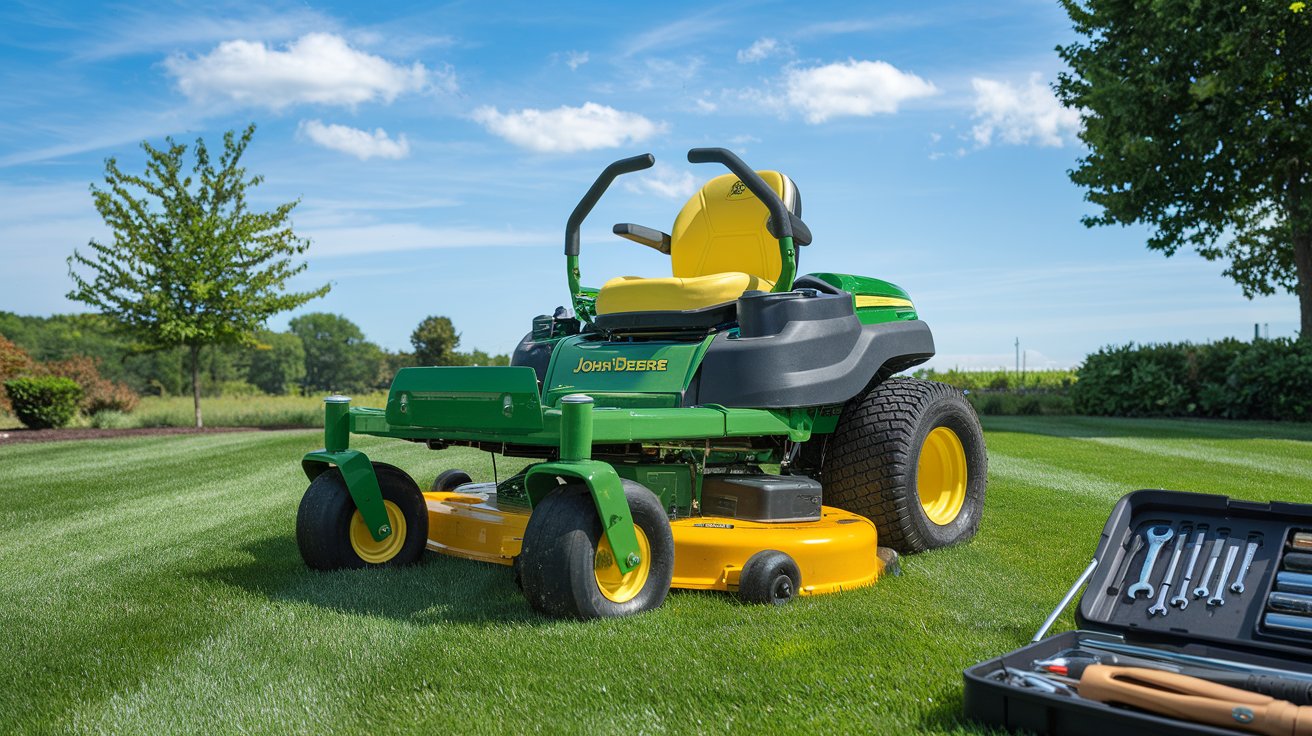The John Deere 2038R is a reliable tractor, but common issues like engine starting troubles, hydraulic malfunctions, and overheating can arise. Most problems are preventable with regular maintenance and timely troubleshooting. Understanding these challenges can save you downtime and repair costs.
Curious about the top 10 John Deere 2038R problems and how to solve them like a pro? Discover practical tips and maintenance hacks to keep your tractor running smoothly. Don’t miss out\u2014click here for the full guide!
In this guide, we’ll explore the top 10 issues owners encounter and provide practical solutions to keep your tractor running smoothly.
1. Engine Starting Issues
Common Symptoms:
- Difficulty starting the engine.
- Engine cranks but doesn’t turn over.
- Frequent stalling shortly after starting.
Causes and Solutions:
- Weak Battery: Inspect the battery connections for corrosion and ensure they are tight. If the battery is old or undercharged, replace or recharge it.
- Clogged Fuel Filter: Replace the fuel filter regularly to prevent blockages that restrict fuel flow.
- Faulty Glow Plugs: Test the glow plugs, especially in colder climates. Replace defective ones to improve cold starts.
- Starter Motor Issues: If the starter motor is faulty, repair or replace it as needed.
2. Hydraulic System Malfunctions
Common Symptoms:
- Slow or unresponsive hydraulic components.
- Leaks in the hydraulic lines.
- Strange noises from the hydraulic system.
Causes and Solutions:
- Low Hydraulic Fluid Levels: Check and top off the hydraulic fluid as specified in the operator’s manual.
- Contaminated Fluid: Replace old or contaminated hydraulic fluid to ensure optimal system performance.
- Worn Seals or Gaskets: Inspect seals and gaskets for wear or damage. Replace them to prevent leaks.
- Clogged Hydraulic Filters: Change filters regularly to maintain fluid flow and prevent debris from causing damage.
3. Transmission Problems
Common Symptoms:
- Difficulty shifting gears.
- Grinding noises while shifting.
- Loss of power during operation.
Causes and Solutions:
- Improper Gear Selection: Double-check that the gear lever is correctly positioned.
- Worn Transmission Components: Inspect gears and shafts for wear. Replace damaged parts as needed.
- Low Transmission Fluid: Maintain adequate fluid levels and replace fluid according to the recommended schedule.
- Debris in the Transmission: Flush and clean the transmission system to remove debris.
4. Overheating Issues
Common Symptoms:
- Engine overheating warning light.
- Steam or excessive heat from the engine compartment.
Causes and Solutions:
- Blocked Radiator: Clean the radiator fins and remove debris to allow proper airflow.
- Low Coolant Levels: Check and refill the coolant reservoir. Inspect for leaks in the cooling system.
- Faulty Thermostat: Replace a malfunctioning thermostat to regulate engine temperature.
- Water Pump Failure: Ensure the water pump is functioning correctly and replace it if necessary.
5. Electrical System Failures
Common Symptoms:
- Dashboard lights not functioning.
- Electrical components failing to operate.
- Intermittent power loss.
Causes and Solutions:
- Loose or Corroded Connections: Tighten and clean all electrical connections.
- Blown Fuses: Replace any blown fuses with the correct rating.
- Faulty Alternator: Test the alternator for proper output and replace it if defective.
- Damaged Wiring Harness: Inspect for frayed or broken wires and repair as needed.
6. Steering Problems
Common Symptoms:
- Difficulty turning the steering wheel.
- Excessive play or wobble in the steering.
Causes and Solutions:
- Low Steering Fluid: Check and top off the steering fluid reservoir.
- Damaged Steering Linkages: Inspect for wear or damage and replace defective parts.
- Air in Hydraulic Lines: Bleed the hydraulic lines to remove air bubbles.
- Faulty Steering Pump: Test and replace a malfunctioning pump to restore steering ease.
7. PTO (Power Take-Off) Issues
Common Symptoms:
- PTO not engaging or disengaging properly.
- Loss of power to PTO-driven implements.
Causes and Solutions:
- Incorrect PTO Lever Position: Ensure the lever is in the correct position for operation.
- Clogged PTO Shaft: Clean the shaft and remove debris.
- Worn Clutch Components: Inspect and replace worn clutch parts to ensure smooth engagement.
- Hydraulic Pressure Problems: Check hydraulic fluid levels and filters to maintain proper PTO function.
8. Braking System Failures
Common Symptoms:
- Weak or unresponsive brakes.
- Squealing or grinding noises when braking.
Causes and Solutions:
- Worn Brake Pads: Inspect brake pads and replace them if worn down.
- Contaminated Brake Fluid: Replace old or contaminated fluid to restore braking efficiency.
- Damaged Brake Lines: Inspect for leaks or damage and repair as needed.
- Malfunctioning Brake Actuator: Test and replace a faulty actuator.
9. Fuel System Problems
Common Symptoms:
- Loss of power during operation.
- Increased fuel consumption.
- Engine misfires or stalls.
Causes and Solutions:
- Dirty Fuel Injectors: Clean or replace clogged injectors to restore fuel efficiency.
- Air in Fuel Lines: Bleed the fuel system to remove air pockets.
- Faulty Fuel Pump: Test and replace a failing fuel pump.
- Water Contamination: Use quality fuel and drain water separators regularly.
10. Attachment Compatibility Issues
Common Symptoms:
- Difficulty mounting or operating attachments.
- Reduced attachment performance.
Causes and Solutions:
- Incorrect Attachment Setup: Refer to the user manual for proper attachment configuration.
- Hydraulic Mismatch: Ensure attachment hydraulic requirements match the tractor’s capabilities.
- Damaged Couplers: Inspect quick couplers for damage and replace if needed.
- Inadequate Maintenance: Regularly service attachments to ensure optimal performance.
Preventative Maintenance Tips for John Deere 2038R
To minimize these issues, regular maintenance is essential. Here are some general tips:
- Follow the maintenance schedule outlined in the operator’s manual.
- Keep all filters (fuel, oil, air, hydraulic) clean and replaced on time.
- Use high-quality fluids and lubricants suitable for the John Deere 2038R.
- Store the tractor in a sheltered location to protect it from harsh weather.
- Regularly inspect and tighten bolts, nuts, and connections.
When to Seek Professional Help
While many John Deere 2038R problems can be resolved with routine maintenance and troubleshooting, some issues may require expert attention. If you encounter persistent problems or lack the tools and knowledge to perform repairs, contact an authorized John Deere service center for assistance.
Conclusion
Owning a John Deere 2038R comes with its share of responsibilities, but with proper care and timely intervention, you can enjoy years of reliable performance. By staying informed about common problems and their solutions, you’re better equipped to address issues promptly and efficiently. If you’ve experienced other challenges or have tips to share, feel free to leave a comment below—we’d love to hear from you!

